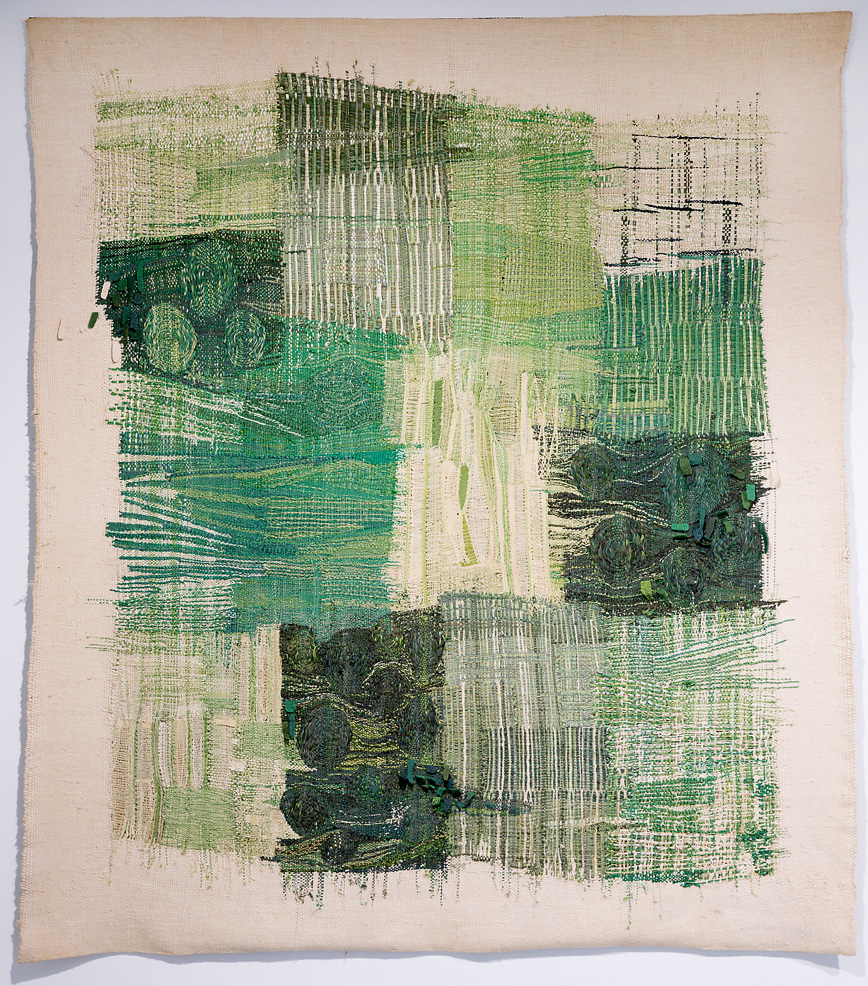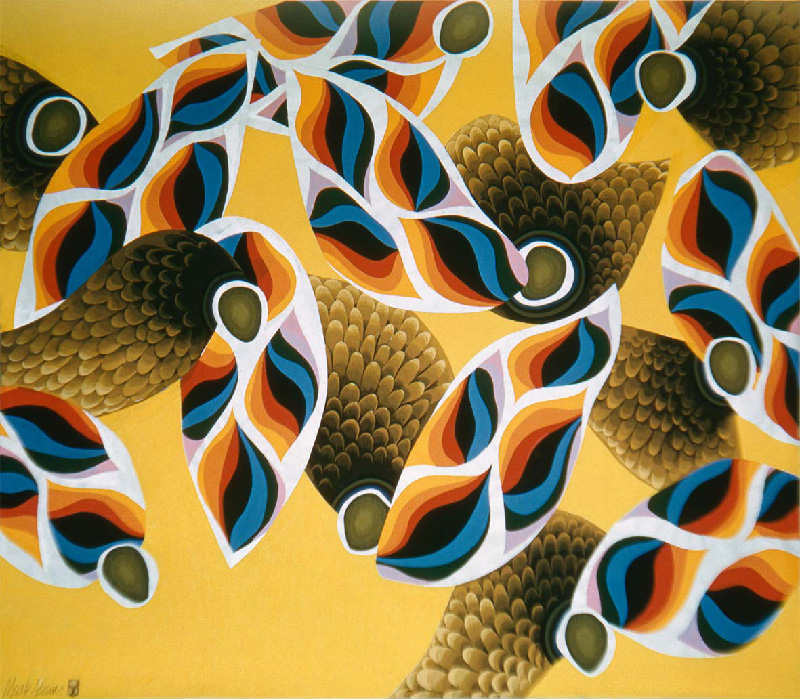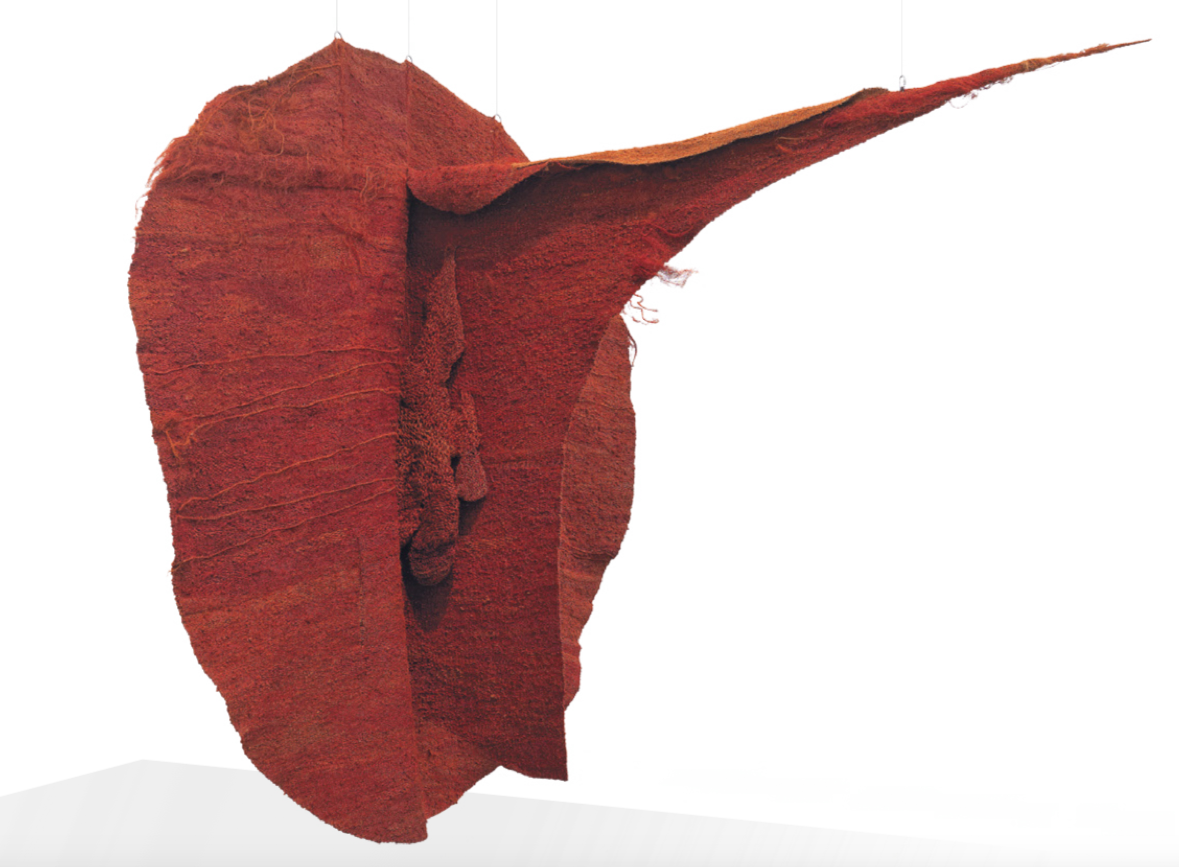
Tate collection, London: presented anonymously 2009.
© Foundation Magdalena Marta Abakanowicz Kosmowska and
Jan Kosmowski. Photo: Stamm & Saxod, Lausanne.
MURAL AND SPATIAL
HOW THE LAUSANNE BIENNIALS 1962-1969 TRANSFORMED THE WORLD OF TAPESTRY
The Cité internationale de la tapisserie in Aubusson is joining forces with the Fondation Toms Pauli of Lausanne to present an international exhibition devoted to the beginnings of the Lausanne Biennials in the 1960s, and the “shakeup” they caused in the art of tapestry and its global history. The exhibition will be held from 28 June to 6 October 2019, in a space designed for monumental tapestry at the Centre Jean- Lurçat in Aubusson.
A seismograph becomes an earthquake
The exhibition presents the rapid metamorphoses that occurred on the global tapestry landscape in the space of seven years, from 1962 to 1969. The concepts, rules, practices and techniques that had been in force since the Second World War were radically challenged at the first Lausanne Tapestry Biennials. Designed by Pierre Pauli, his wife Alice and Jean Lurçat, who was then at the height of his fame, these international events aimed to present the state of wall tapestries at the time. Very quickly, however, the biennials became the epicentre of an apparently destructive upheaval in so-called “traditional” tapestry and the crucible of a new, freer approach that would lead to three-dimensional works.
Female creators change everything
The challenge arrived with young artists and creators, primarily from Switzerland and central and eastern Europe, who would bring about fundamental change right from the first edition in 1962 by breaking with the principle of the artist/artisan pair (the project creator with the holder of the know-how). While woven tapestry had previously been the purview of male artists, this new paradigm opened the door to young female visual artists who took on both roles. Female artists became the majority in 1967 at the Lausanne Biennials and have continued to predominate in the Fiber Art movement until the present.
Released from the wall
By accepting weaving and embroidery, the second Biennial of 1965 obliterated the traditional technical monopoly and led to the “quarrel of Lausanne” between French artists and the Swiss organisation. While wall tapestry focussed on a search for textures, more and more artists were exploring the three-dimensional opportunities offered by the medium. The Biennial of 1967 revealed the first signs of emancipation from the wall, in particular with Swiss artist Elsi Giauque’s Column, the first textile work to be suspended in empty space. The 1969 edition confirmed these changes with numerous pieces moving off the walls to become textile sculptures. The exhibition was presented the same year at the Manufacture des Gobelins in Paris, introducing the French public to these new textile expressions. From 1970 onwards, the different currents cohabited and explored their own individual paths which often crossed but rarely merged.
Works selected for the exhibition
Thanks to a world-wide research, some 35 tapestries have been chosen for the exhibition, the same works that hung on the Biennial’s walls at the time. The choice of works illustrates classic French wall production through Lurçat and his painter- cartoonist friends (Prassinos, Tourlière), as well as some great painters’ works woven by national manufactories or by Aubusson ateliers (Picasso, Delaunay, Estève). Other woven tapestries show the diversity of European and American production (Somville, Rousseau-Vermette, Yoors, Adams, Scholten). On the other side are Polish artists who made a big impression (Abakanowicz, Owidzka, Sadley) as well as the first three-dimensional creations (Giauque, Jobin, Abakanowicz, Daquin, Lindgren).
Lenders
The Cité internationale de la tapisserie and Fondation Toms Pauli will present a number of pieces from their collections. The Tate Modern in London has agreed to lend Magdalena Abakanowicz’s 1969 Abakan Red on an exceptional basis. The Mobilier National in Paris and the Central Textiles Museum in Lodz, Poland were also contacted. Lenders also include the Yoors Foundation in New York, UNESCO in Paris for a piece by Le Corbusier, and the Musée national des beaux- arts du Québec.
Curators of the exhibition
Bruno Ythier, curator of Cité internationale de la tapisserie, Aubusson, and Giselle Eberhard Cotton, director of Fondation Toms Pauli, Lausanne.
Book
From tapestry to Fiber Art – The Lausanne Biennials 1962-1995 by Giselle Eberhard Cotton and Magali Junet of the Fondation Toms Pauli was published in late 2017, and covers all of the Biennials of Lausanne. It will be available for sale at the exhibition.
press release
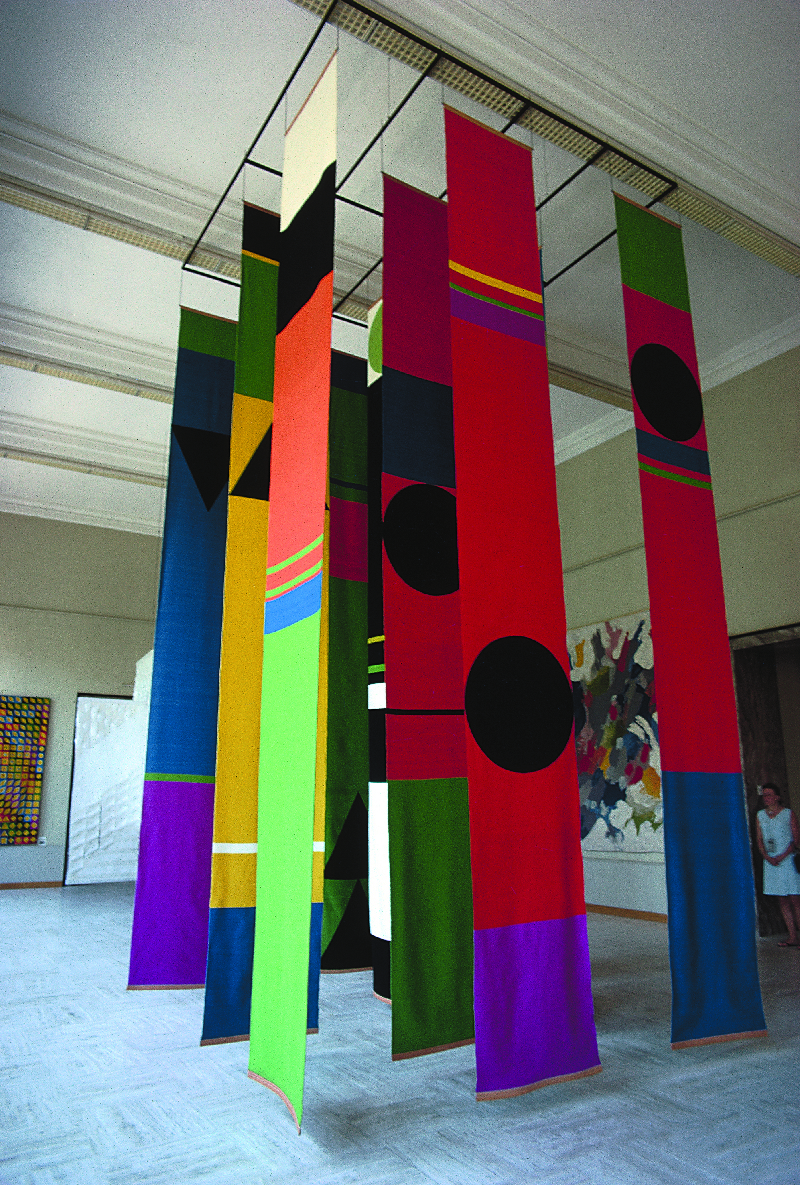
collection, Lausanne. Photo: Arthur Jobin
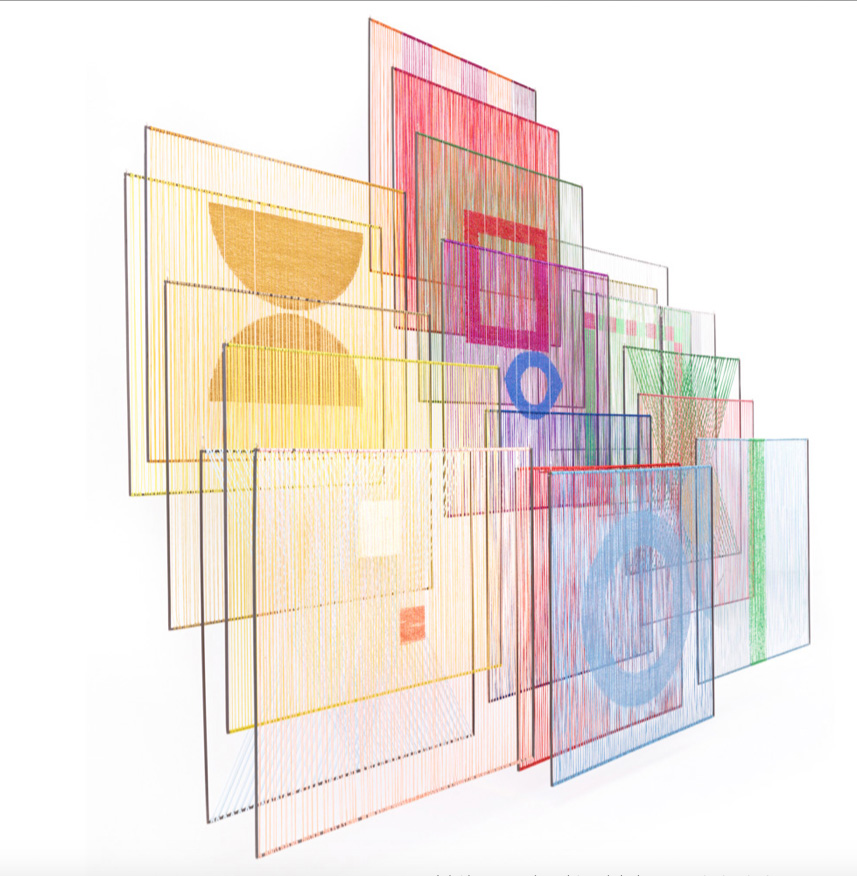
Collection Mudac, Lausanne. Photo : Arnaud Conne
